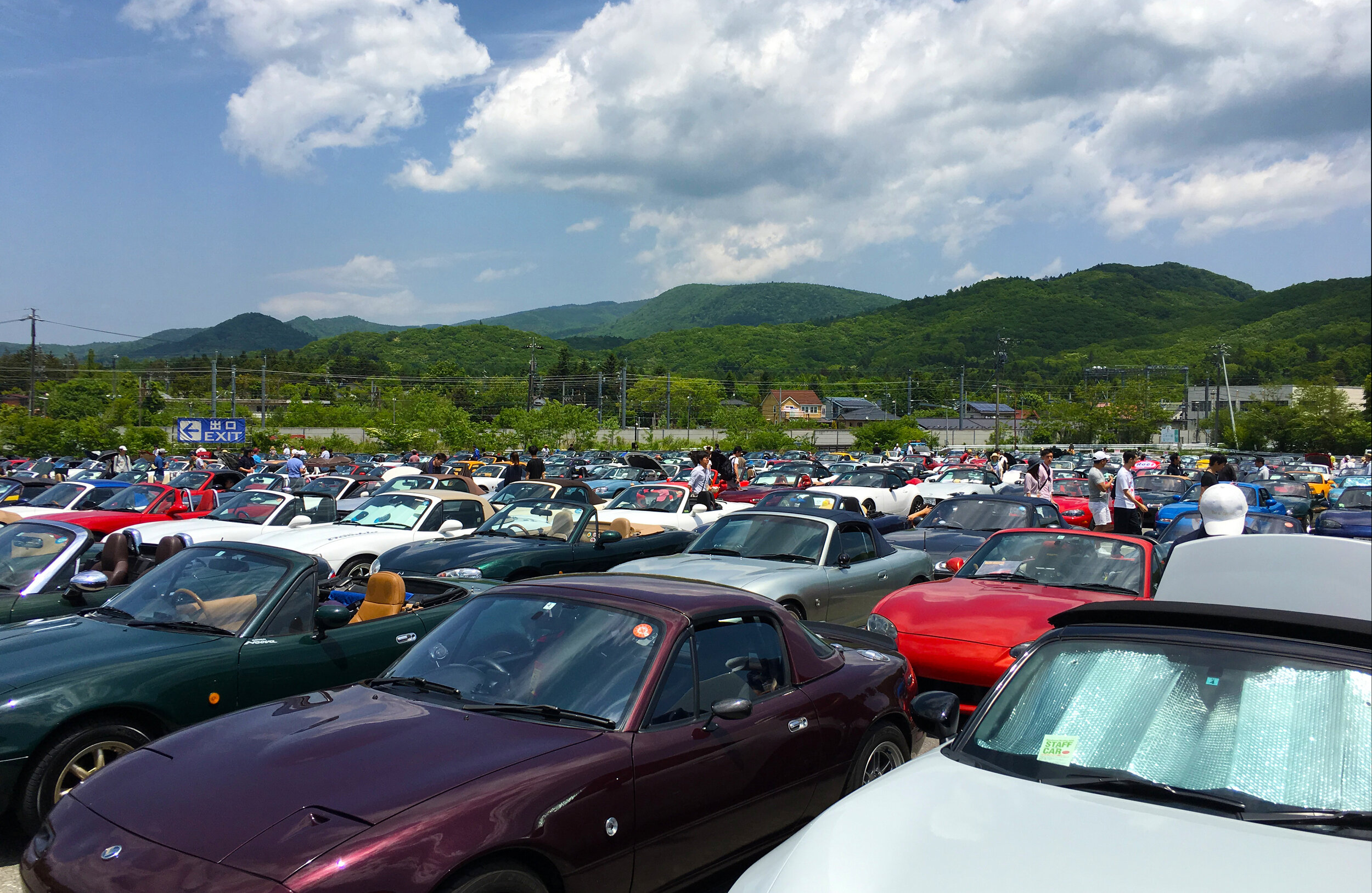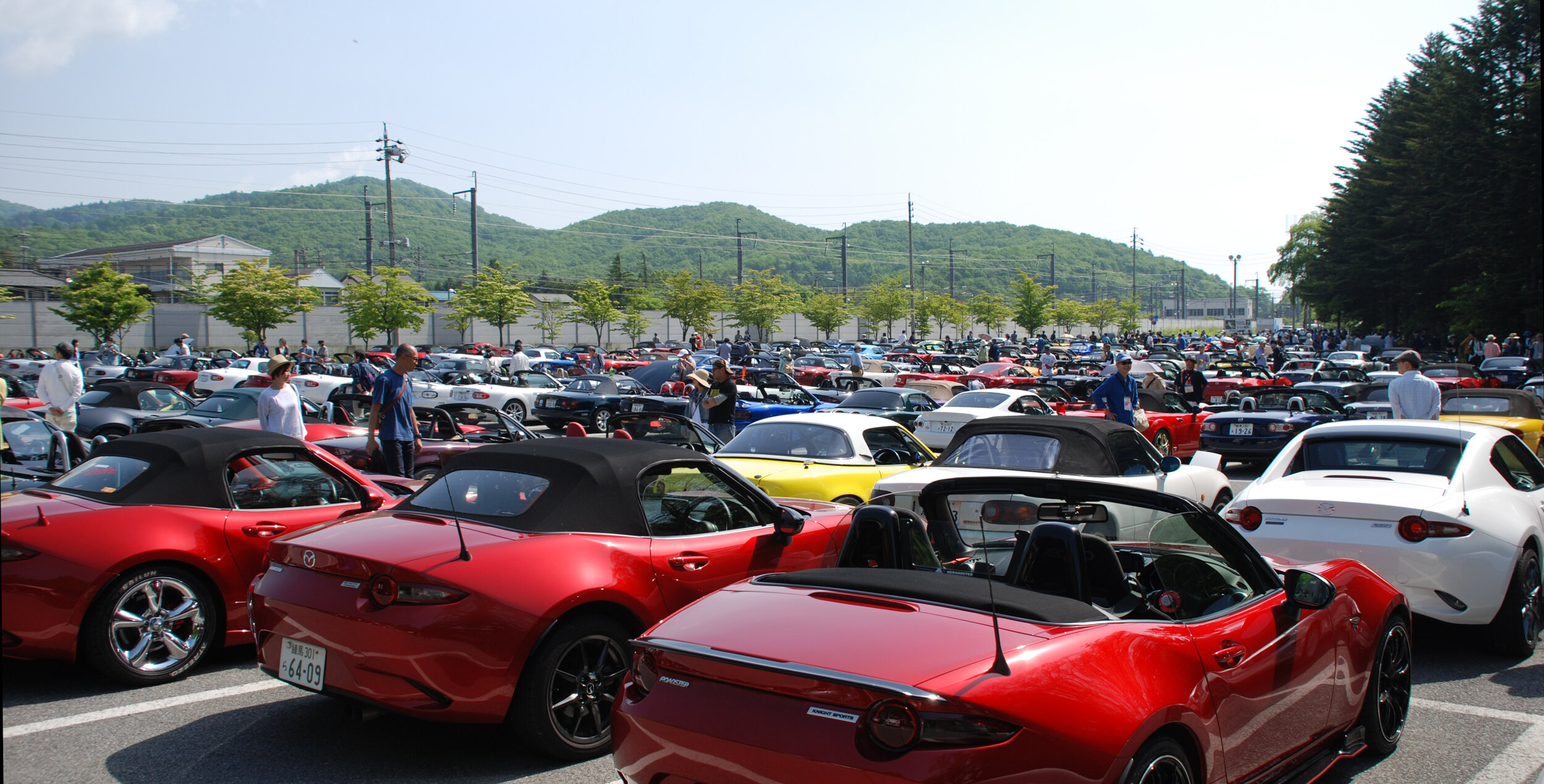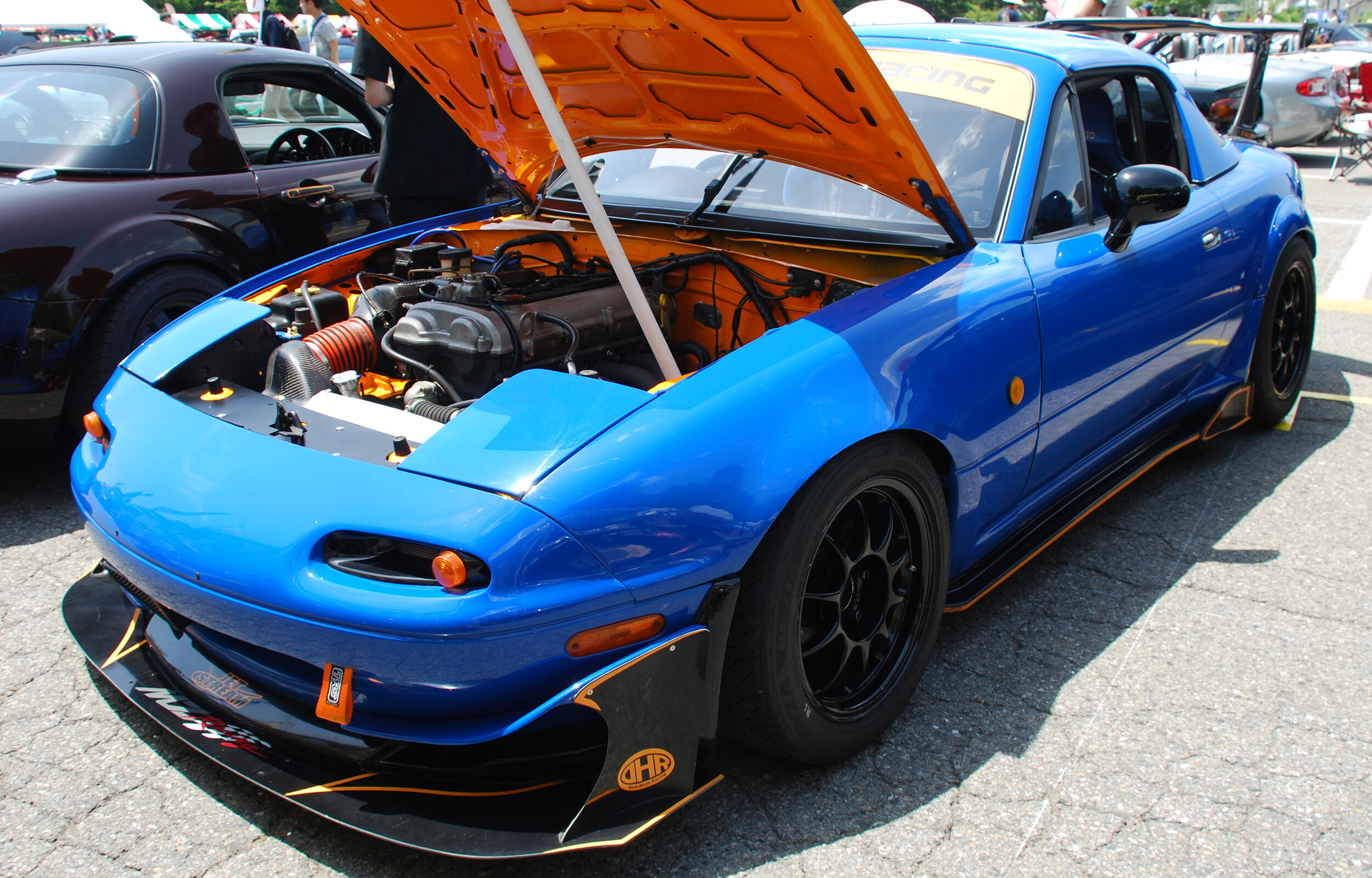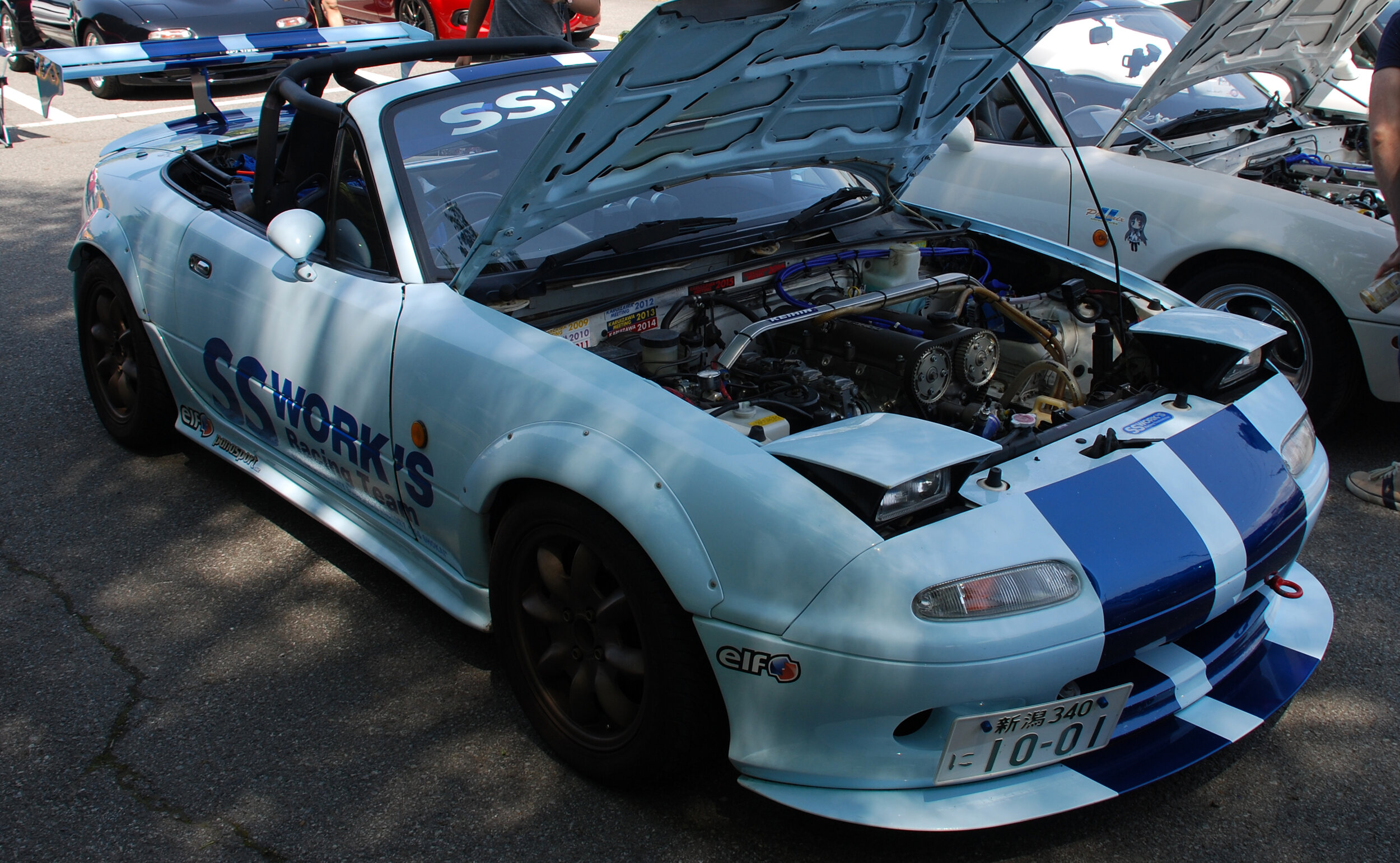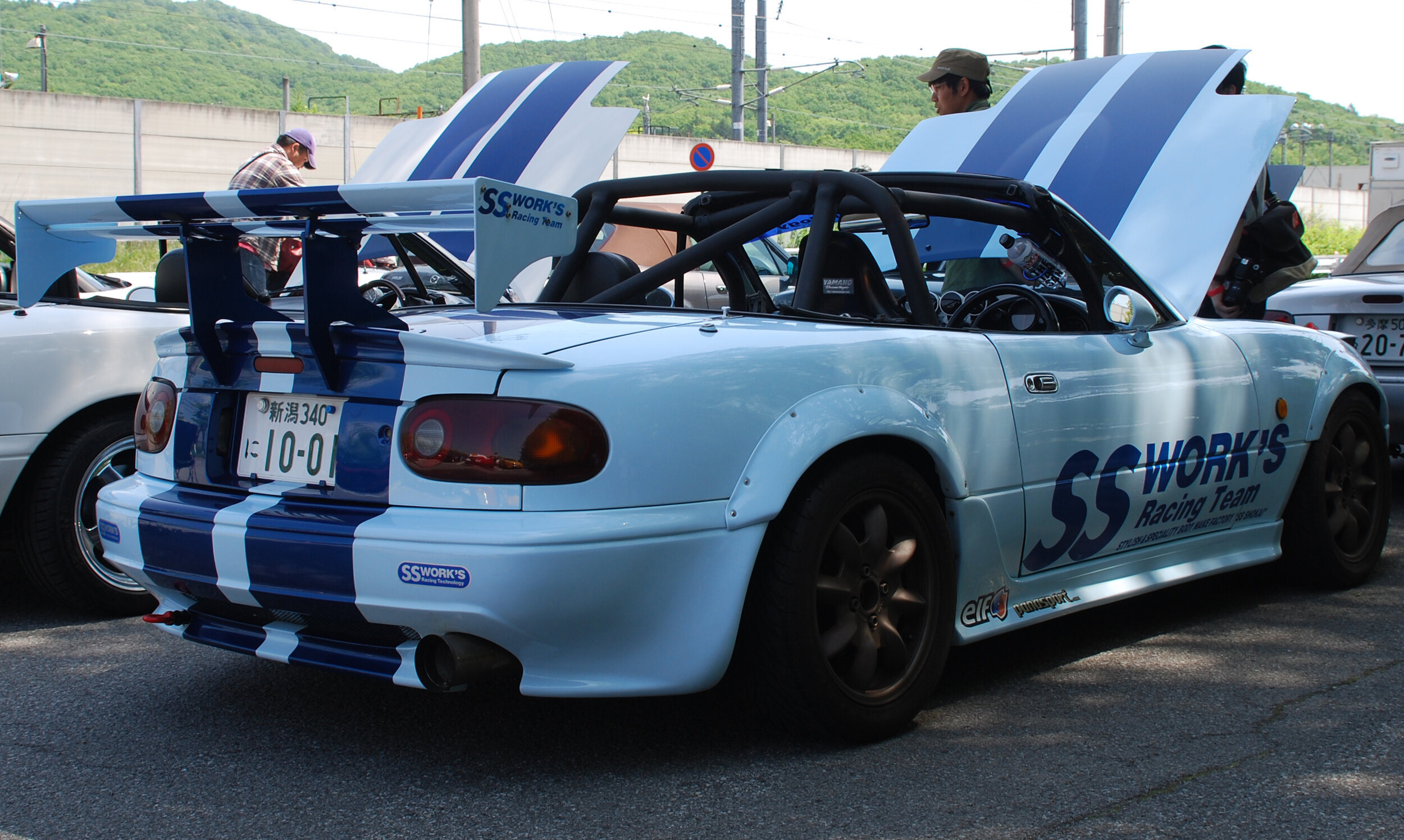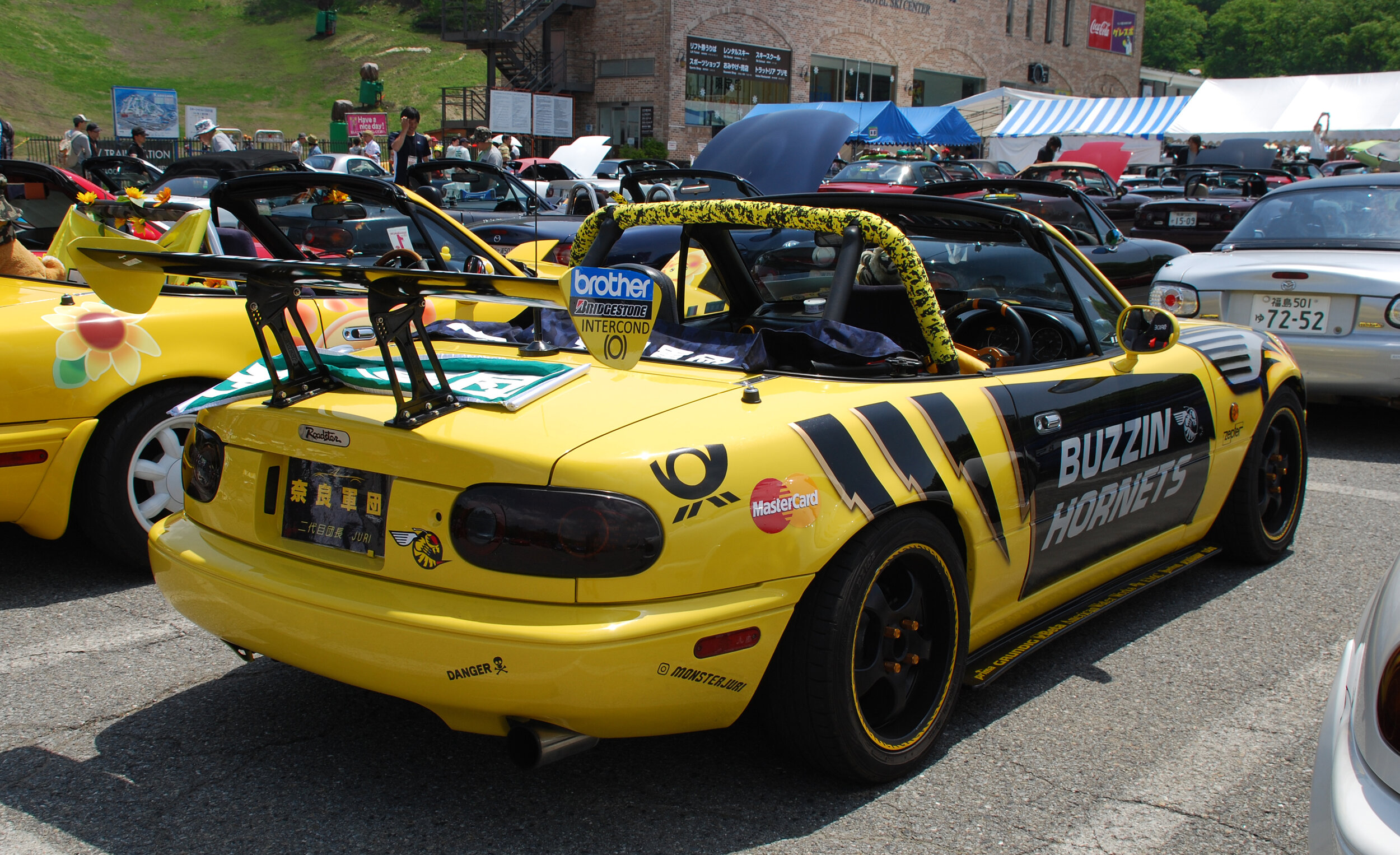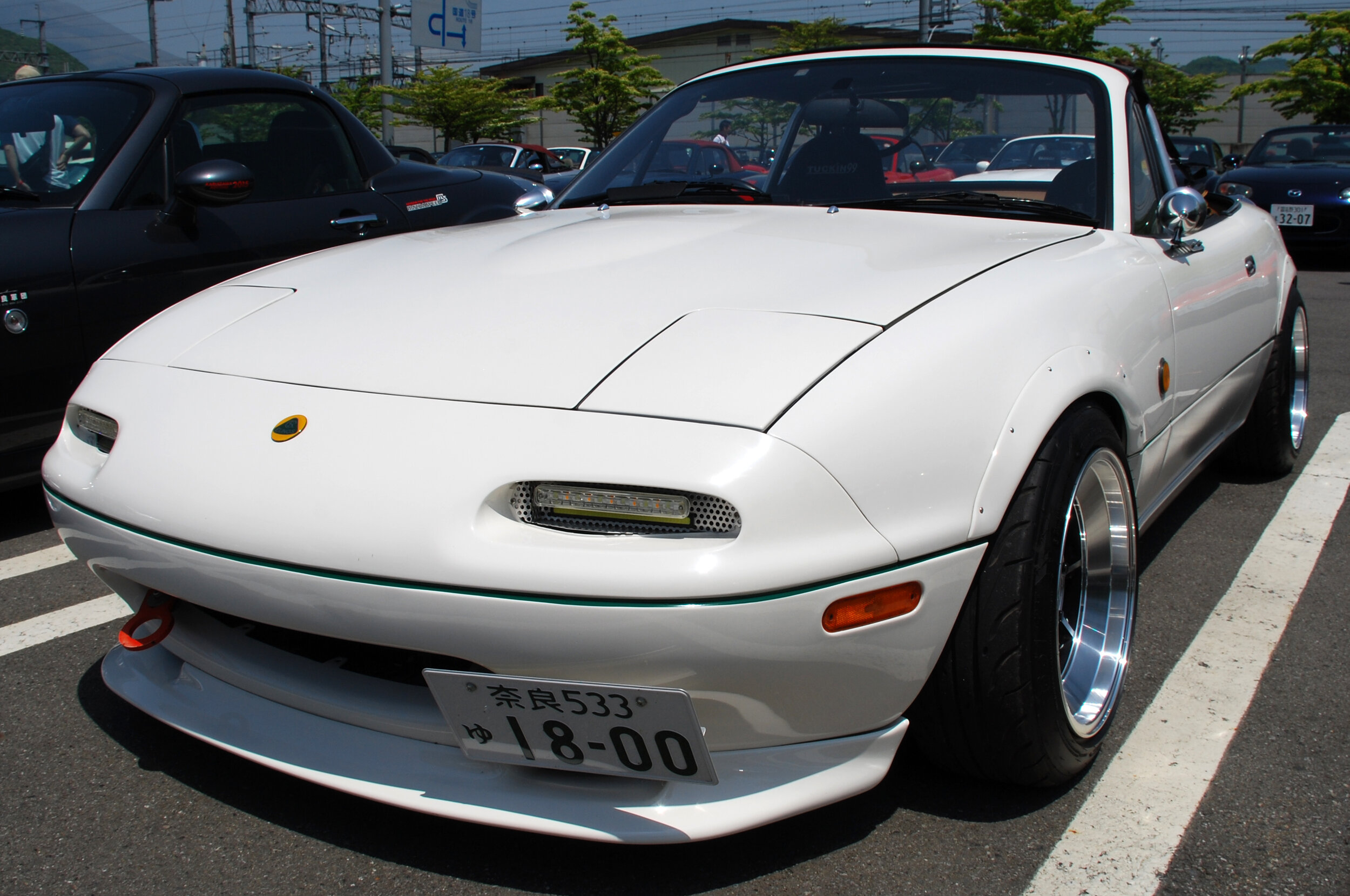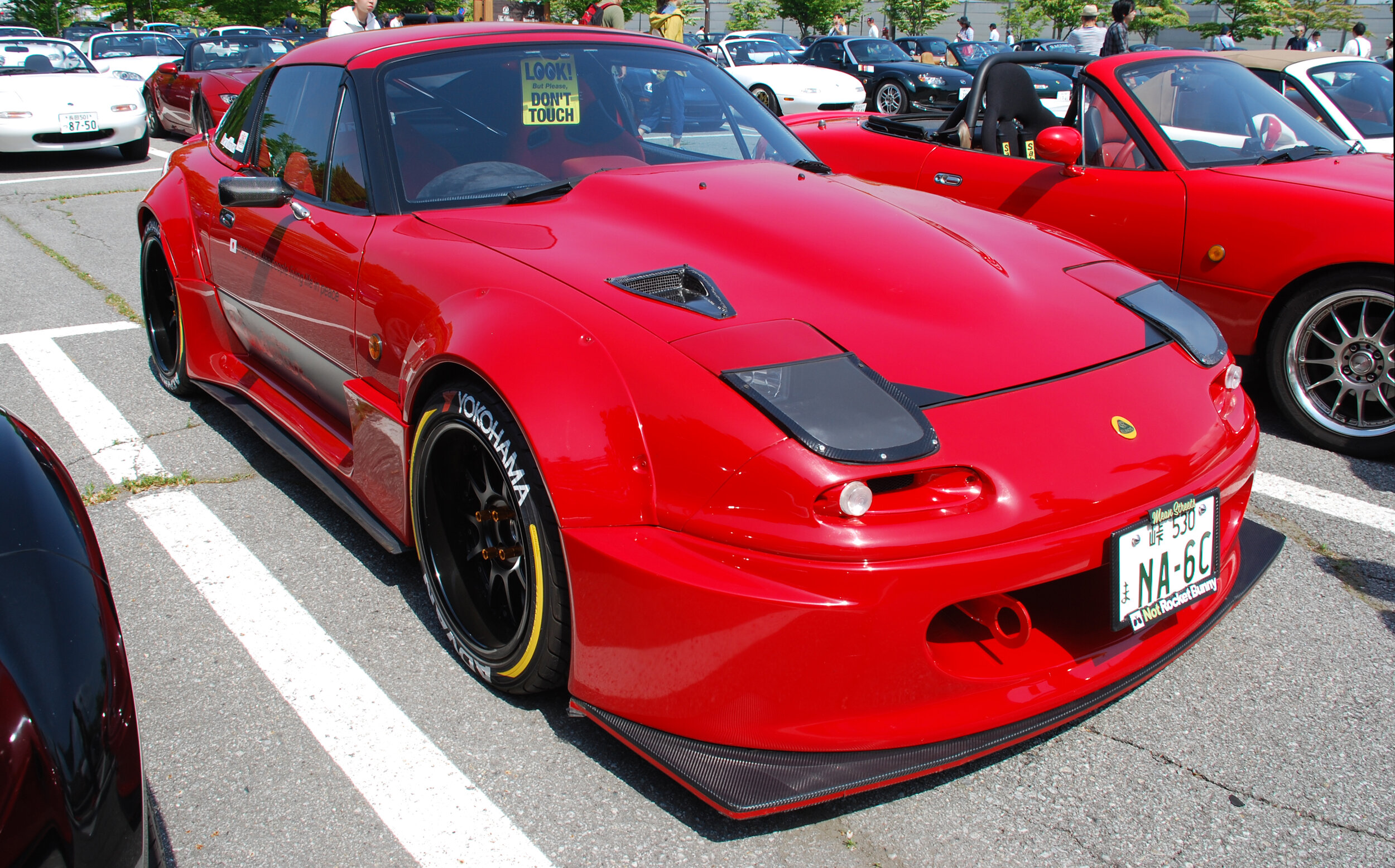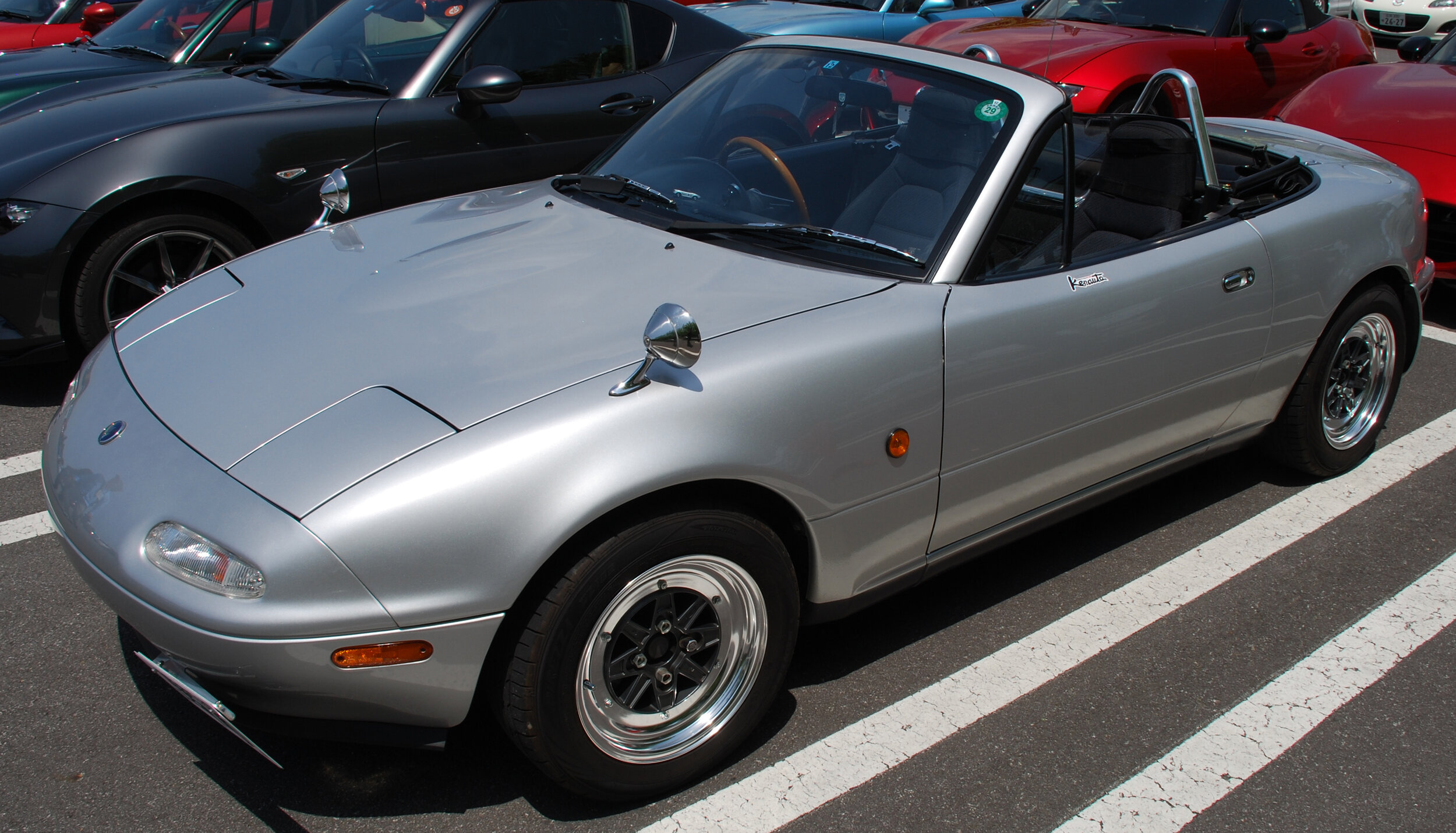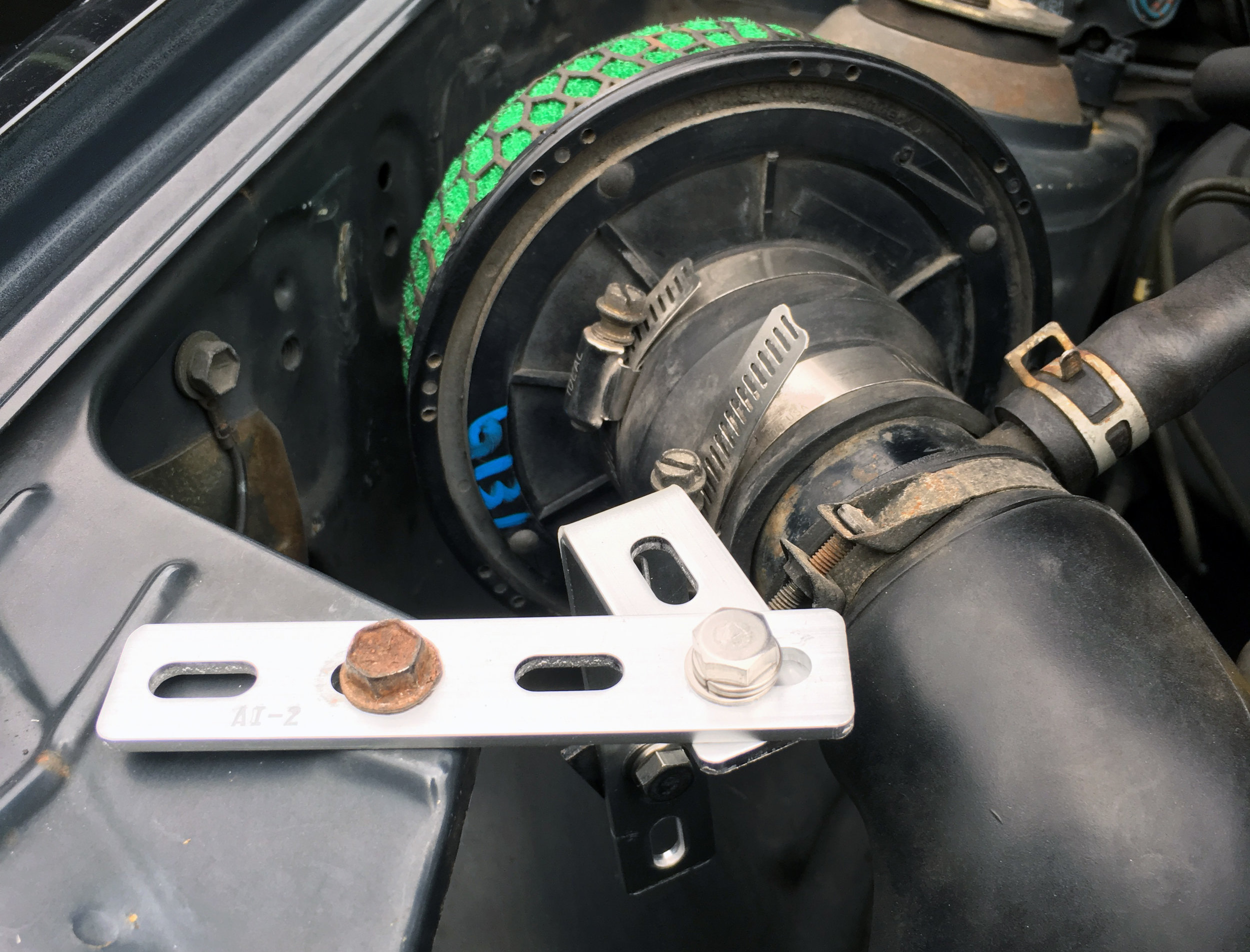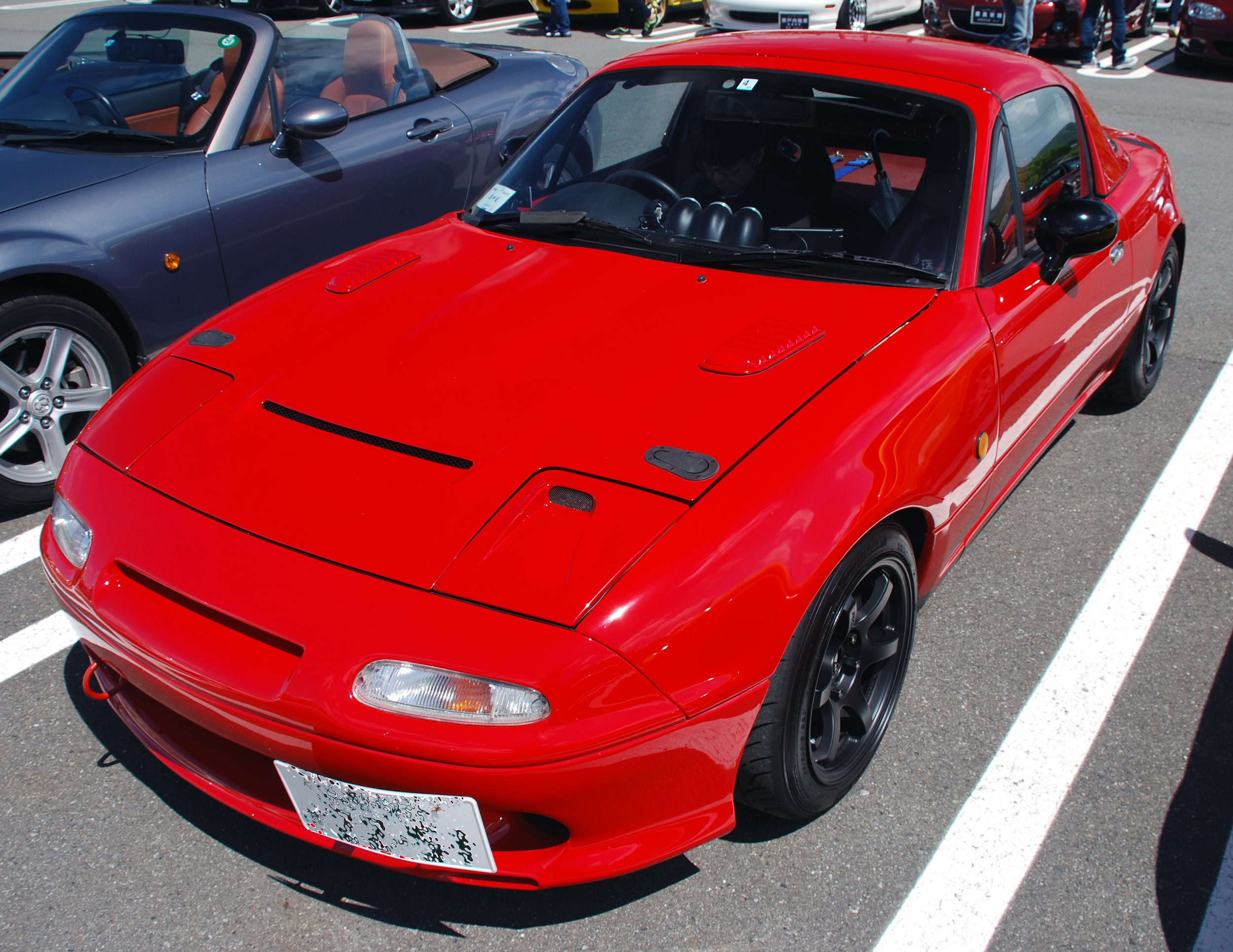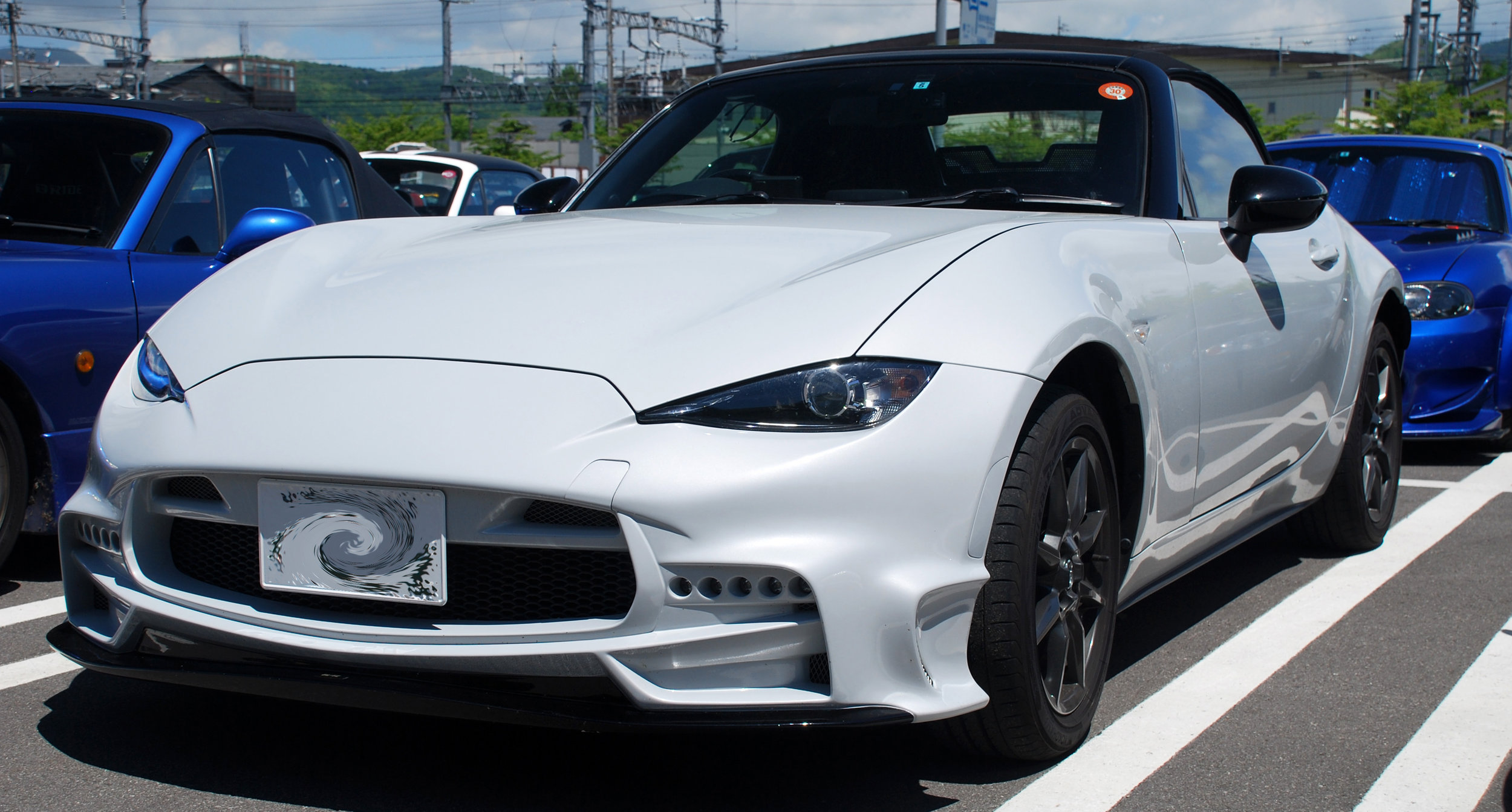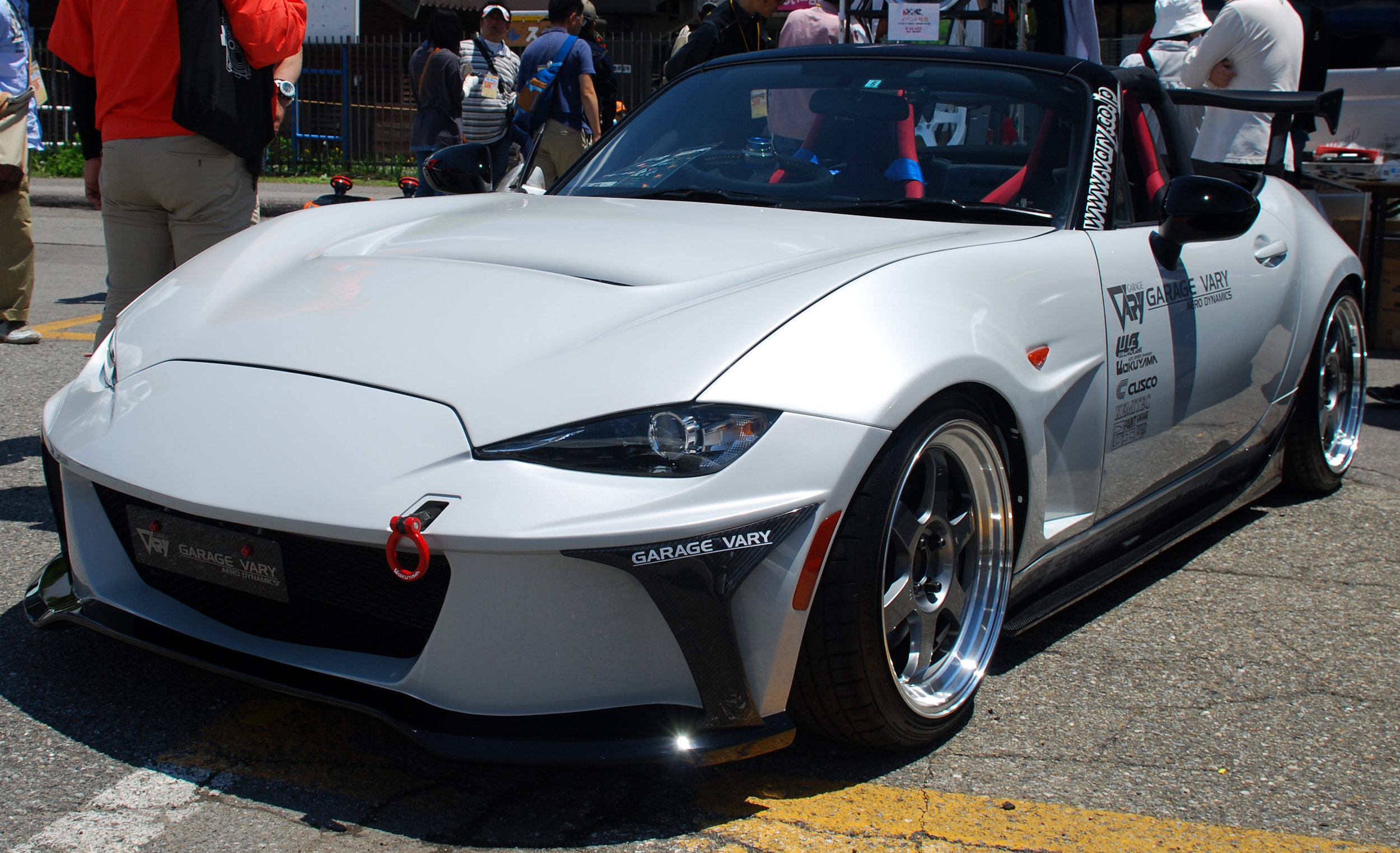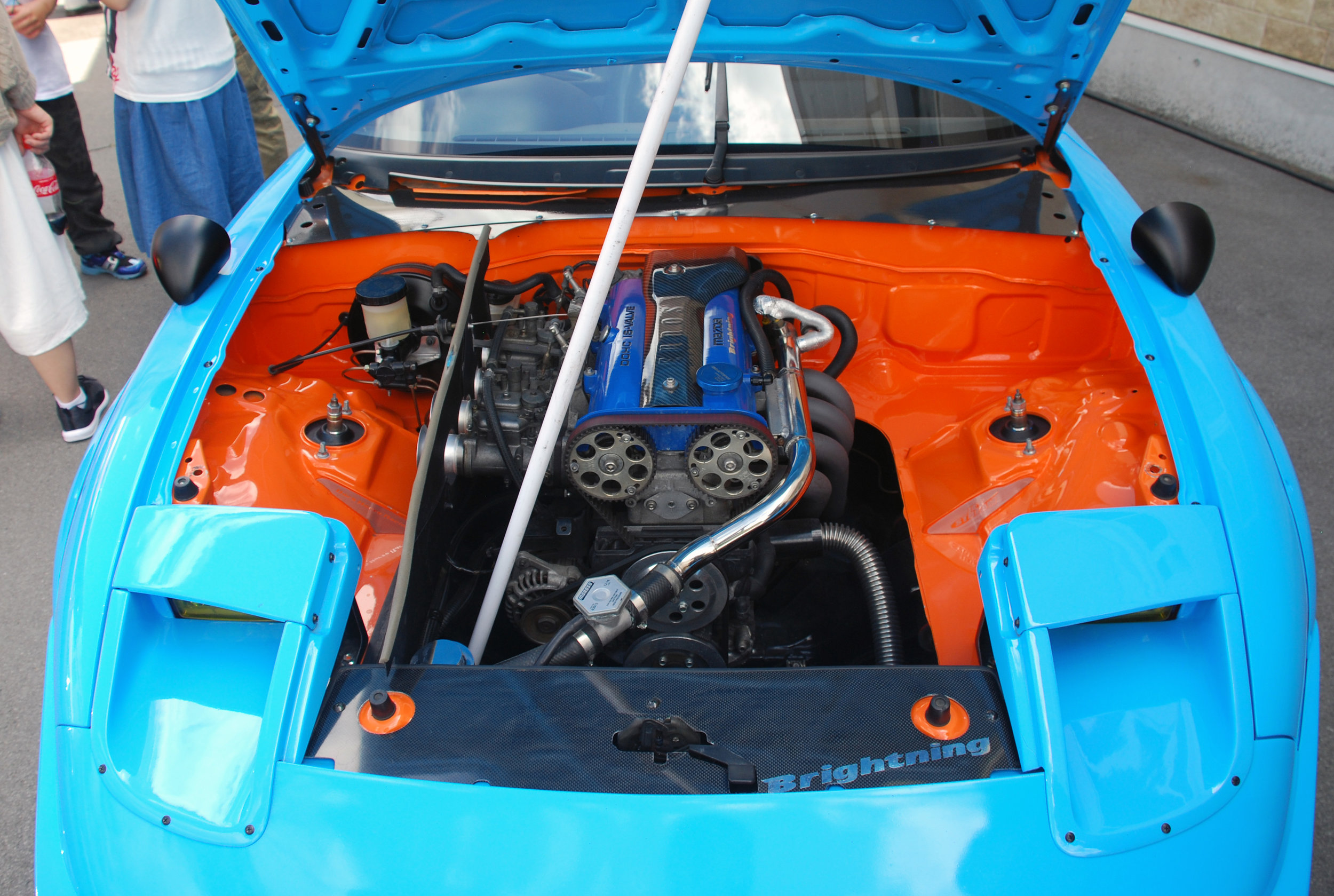Karuizawa Meeting 2018
The Karuizawa Meeting 2018 was a huge annual Mazda MX-5 Miata Roadster meet last week on May 27. I made another 9 hour drive to beautiful Karuizawa in Nagano, Japan, to check it out.
The event was held, as in the previous years, at the Prince Hotel Ski Slope parking lots. There, as far as the eye can see, were rows upon rows of unique Roadsters in all years, conditions, and modifications. This year, I felt there were less NBs and NCs, but many more NDs. There were still a fair number of NAs present.
(Sadly, due to various commitments, I was not able to attend this year’s meet.)
I wasn’t sure I would be able to snag parking, so I actually ended up stopping at Naka-Karuizawa Station and parking there, though I realized later I came early enough to potentially get a good spot when I walked up around 8:30 AM. I did learn a lesson last year: since there were three lots, I had to work quickly to cover as many cars and as much ground as possible.
I started with Lot 2, which was already full, instead of Lot 3, which was still filling up. While I appreciate a good stock, well-kept NA or NB Roadster as much as anyone, I came here for the custom ones.
I didn’t spend long taking beauty shots of the stock ones or the ones with minimal modifications, as my time was limited.
Another big change this year is the wider variety of wheels and many NAs rocking smaller diameter wheels with fatter tire setups than I saw the year prior.
Now that it was getting into the late morning, Lot 3 was full and closed up. (They stop entry into the 3 main lots at 9:30.)
There were more NAs, NBs, and a few NDs, even the “Fiata” (Fiat Spider) versions.
Finished with the outer two lots, I entered Lot 1 where the dealer booths and shop cars were shown, along with the main tent. RS Factory Stage had two sporting NDs quite heavily cosmetically modified. Autoexe made a good showing with their variety of braces for the ND, Barchetta with their always… unique… NC, Car Make Corn’s with their lifted car and variety of parts.
Even though the NA stopped being produced 20 years ago, Garage Vary still had a few new parts to showcase, such as their newly redesigned aero lip, hardtop, and yet-to-be-sold rear diffuser. According to the staff the diffuser is tested and is flat-bottomed to ahead of the rear axle, though I couldn’t see well underneath to confirm.
Nakamae’s Beautiful Shop Car Interior
Jet Stream’s blue NA looks posed to take a track and on the other hand, Esqueleto’s ND is ready to just cruise.
Although this wasn’t part of the official booths, a few companies brought their shop cars. SS Works was probably my favorite of those. It had some serious engine work… and nitrous!
Finished with the shop cars, I set about to go up and down the rows of Lot 1. As with the other two lots, there were a range of heavily modified to virtually stock, but most had at least a set of aftermarket wheels. I took plenty of pictures of those, especially since I recently became inspired to change up my own Miata. I finally determined that 14” wheels with fat 60 Series rubber fits the look of the NA the best, especially since my own has a retro-modern theme. Watanabe? Work Wheels? Enkei RPF1s? Volk Racing TE37Vs? Ah, the potential is endless...
If you’re gonna do something strange, you might as well go all in. This has some cool Buzzin Hornets livery used on Hondas in the late 90s.
Full bumper and fender conversions really change the look of an NA Roadster.
Aston Martin NB, anyone?
I saw a couple more Project-G -style G-String Bikini Tops this year from last. A few of them are definitely homemade, though a few I thought might actually be legit.
I definitely noticed a few more lowered, stanced Roadsters with minimal wheel gap and greater camber this year, but few I would consider “slammed.” I know there are quite a few in Japan, but maybe those guys don’t really come to these type of car meets. In either case, these are really clean and well-taken care of. The love for their cars shows, as they all have properly rolled fenders and reputable wheels. Thankfully, I didn’t see the likes of the haphazard, poorly slammed ones I often see bouncing around on Los Angeles freeways.
On the opposite end of the slammed spectrum, perhaps literally, were these two lifted cars, riding high on all-terrain knobby tires. Excluding the shop car, these two owners really wanted to be able to take their Roadster anywhere. I know in North America, Paco Motorsports sells a lift kit for the Miata, but I’m not sure how these have been raised. Either way, I really love the NB2 with its off-road LED lighting array, custom skid plate, and spare tire and gas racks bolted to the rear decklid. Flawless execution.
There were plenty of beautiful examples of absolutely stunning custom paintwork.
While I could probably write whole articles on each individual NA or NB on the lot, I think these two cars were my favorites this year because they each pulled off a theme very well. This NA, while not adorned with massive flares, body kit, or extremely wide wheels, managed to draw my eye as it pulled into the lot. It was beautiful, simple, and cleanly executed. The owner likely wanted to keep true to the “M2” classic Roadster theme and yet offer his own unique plus alpha take on the concept with some custom work.
Kudos to this gorgeous one as well, rocking simple fender flares, beautiful Hayashi Racing wheels, chrome roll bar, topped off with a bikini top.
And then there is absolutely so much to love about this NA. With so much kit from a fastback hardtop, huge fenders, slick diffuser, fat wheels, and a huge bulge in the hood… certainly hiding something monstrous underneath.
As always, I am attracted to the little custom things that some guys do to their roadsters. Added hood vents, interior gauges, and engine work are often seen, but sometimes you get a few really unique things. Now this was something special. It is definitely the cleanest original work I’ve seen in awhile.
This one has a few things that I personally like, cut rear bumper, full cage, 14” TE37s…
Yesss… Fender mirrors, anyone? How do y’all feel about them?
This made me smile. Is this supposed to be old school Alitalia rally car livery???
Not everything was peaches and cream, though. Sometimes less is more.
Completely exhausted, I meandered back to the train station and took another 9 hour drive straight home. There were so many things I wanted to buy, but my funds sadly are tied up in my Alto Works and Swift Sport at the moment. I’ll make it a point to bring a bit of cash next year for these show-exclusive deals they offered... There’s always next year! I’ll definitely come again.

